Here's every local detail for Australian's looking to buy an iPhone 12, 12 Pro, 12 Mini or 12 Pro Max.
iPhone 12: Every detail Australians need to know
iPhone 12 in summary
- Models: iPhone 12 Mini, iPhone 12, iPhone 12 Pro, iPhone 12 Pro Max
- Sizes: 5.4-inch (iPhone 12 Mini), 6.1-inch (iPhone 12, 12 Pro), and 6.7-inch (iPhone 12 Pro Max)
- Display: Super Retina XDR OLED with Ceramic Shield protection
- Processor: A14 Bionic Chip
- Connectivity: 5G
- Price range: $1,199 to $2,369
- Water resistance: IP68 rating with maximum depth of 6 metres for up to 30 minutes
- Storage: 64GB (iPhone 12 Mini and iPhone 12) to 512GB (iPhone 12 Pro and 12 Pro Max)
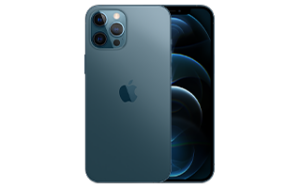
Apple says it with every new release, but the iPhone 12 truly is the best iPhone yet. With a greater selection of sizes and colours than ever, 5G connectivity, a sleek new design, better durability and improved cameras, there's no doubt that the latest lineup will prove popular among dedicated Apple fans and non-fans alike.
But with so much to choose from, which is the right model for you? We've broken down everything you need to know before making the big purchase.
Looking for more of our latest coverage on the iPhone 12? Check out these guides.
- iPhone 11 vs iPhone 12: The biggest upgrades
- iPhone 12 Mini vs iPhone SE Battle of the baby iPhones
- iPhone 12 price breakdown: Award-winning originals and shopping perks
- Updated iPhone 11 pricing Find a deal on last year's model
- HomePod Mini An affordable Google Home alternative
- Best phones The iPhone 12 tops our list of the best smartphones available
The iPhone 12 range
iPhone 12 Mini, iPhone 12, iPhone 12 Pro and iPhone 12 Pro Max.
- The tiny one: The 5.7-inch iPhone 12 Mini
- The vanilla one: 6.1-inch iPhone 12
- The pro-shooter: 6.1-inch iPhone 12 Pro
- The LARGE one: 6.7-inch iPhone Pro Max
At the cheaper end of the spectrum, we’ve got the iPhone 12 Mini. This compact (well, be modern standards) iPhone is the smallest 5G smartphone on the market. What you lose in screen real estate, you make up for in value as its also the cheapest iPhone in the 12 series, starting at $1,199 for the 64GB model.
Next in line is the base iPhone 12 model. This is the everyday iPhone model. It’s a little more expensive at $1,349 for 64GB, but its 6.1-inch display means you reclaim some screen real estate for the added cost.
Next we venture into Pro territory. The iPhone 12 Pro shares the same display size at the 12 at 6.1 inches but holds a premium starting price of $1,699 for the 128GB model. What you’re getting for the significant price increase is a quad camera array with an upgraded 12Mp ultra wide, wide and telephoto lenses, and 10x digital zoom.
Then at the very premium end of the spectrum, you’ve got the iPhone 12 Pro Max. A 6.7-inch phone so ludicrously large it rivals the Samsung Galaxy Note 20 Ultra, the apex of thicc phones. iPhone 12 Pro Max handsets start at $1,849 for the 128GB model but it’s not just size you’re paying for, it also has a slightly better Pro camera, with 12x digital zoom.
iPhone 12 Mini plans
As the cheapest iPhone 12 in the range, the iPhone 12 Mini plans come at a more reasonable price than its 12 and 12 Pro siblings.
iPhone 12 plans
If you're keen on the base iPhone 12 model, here's how much each provider will charge you over a 24-month period.
iPhone 12 Pro plans
And if it's the snap-happy iPhone 12 Pro you're after, take a look at what each provider charges for the 128GB model.
iPhone 12 Pro Max plans
Apple's big bertha, the iPhone 12 Pro Max, is obviously the priciest of the bunch (being the premium iPhone 12 experience). Here are the most popular iPhone 12 Pro Max plans from Telstra, Optus and Vodafone.
iPhone 12 Price
From $1,199 for Mini to $2,369 for Pro Max
Local pricing isn't exactly as we expected here in Australia. We predicted the Mini would come in a little cheaper than it did, and we still think it would have been refreshing to see Apple put one foot back over the $1,000 line. Still, the entire range is priced almost identically to the iPhone 11's launch pricing, with a few exceptions.
For example, the very top-end of Apple's premium pricing is a little lower in the 12 series than it was in the 11 range. So there's that. For a full list of models and outright pricing, as well as the iPhone 11 and iPhone 11 SE launch pricing for comparison, check out the table below.
iPhone 12 colours and design
Five options for Mini and 12, four for Pro and Pro Max.
Let's be honest, technical upgrades be damned, if a stranger doesn't immediately realise you have the latest iPhone, have you truly upgraded? Thankfully, the iPhone 12 range has fairly distinct look. Its squared edges are designed to match the latest iPads but you may also be having fond flashbacks of the iPhone 4s or 5.
Your colour options are par for the course, with the brighter, more vibrant options at the cheaper end of the range, and the sleeker metallic finishes at the premium Pro end. In place of last year's controversial Midnight Green option, there's a more favourably received Blue option for the 12 and 12 Mini, and a shiny Pacific Blue for the 12 Pro series. Here's a look at all your colour options side by side.
iPhone 12 Mini Colours
- Black
- White
- (Product) Red
- Green
- Blue
iPhone 12 Colours
- Black
- White
- (Product) Red
- Green
- Blue
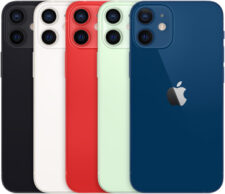

iPhone 12 Pro Colours
- Graphite
- Silver
- Gold
- Pacific Blue
iPhone 12 Pro Max Colours
- Graphite
- Silver
- Gold
- Pacific Blue
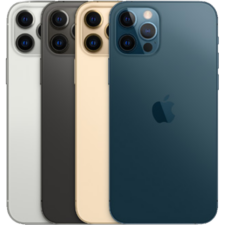

Key upgrades to the new range
5G connectivity, A14 Bionic chip, OLED display, IP68 water-resistance and more.
Before we delve into the differences between each model, let's take a look at the core handset upgrades you get in every new handset.
5G speeds
Speed and, specifically, 5G connectivity is what Apple wants to make the most noise about. As the first 5G iPhone, Apple isn't holding back. Unlike Samsung and Google, Apple committed to 5G with no option for a cheaper 4G iPhone 12 model.
Every iPhone 12 you buy will be 5G compatible. Even though 5G in Australia is still in its infancy, the new iPhones are future-proofed to take advantage of the next-gen network once its fully realised. In Australia, we don't get the 5G millimetre wave (mmWave) model of the iPhone 12 (that's only available in the U.S.) but Apple still claims the iPhone 12 is capable of achieving 3.5Gbps download speeds in Australia.
Whether the limited 5G tech impacts you or not depends on how long you plan on holding on to your iPhone 12. Telcos will start bidding on mmWave in 2021, but even then consumers shouldn't expect to be able to access it until late 2021 or even 2022.
Our earliest experiences with 5G proved to be a major drain on battery life (which is especially painful when you've paid extra for 5G) but Apple says its solving for this with what it calls 'Smart Data' mode. Enabling Smart Data mode allows the iPhone 12 to analyse the tasks its performing and only connect to 5G when you need it, balancing your device's need for speed, power, and battery life on the fly.
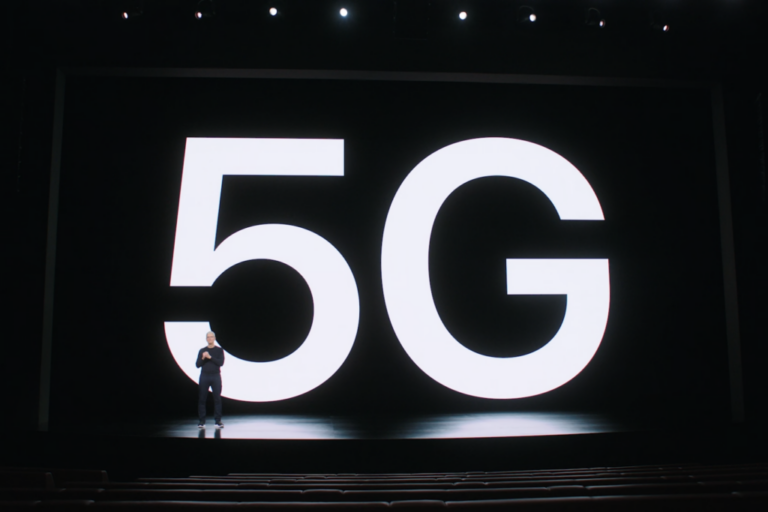
Fastest smartphone processor on the market
Sticking with the speed theme, each iPhone 12 model is kitted out with the upgraded A14 Bionic chip. If you thought your iPhone 11 was fast, the 12 runs laps around it (and every other smartphone on the market). Of course, we're well past the point of diminishing returns when it comes to processing speed for everyday smartphone use, but that hasn't stopped Apple from pushing the envelope with its new chip. Apple claims the A14 Bionic's CPU and GPU are 50% faster than competing smartphone chips.
We won't waste any more time on this except to say that all that extra work under the hood does allow the iPhone 12 range to pull off some pretty magical stunts, like 'computational photography' and better battery management under the weight of 5G.
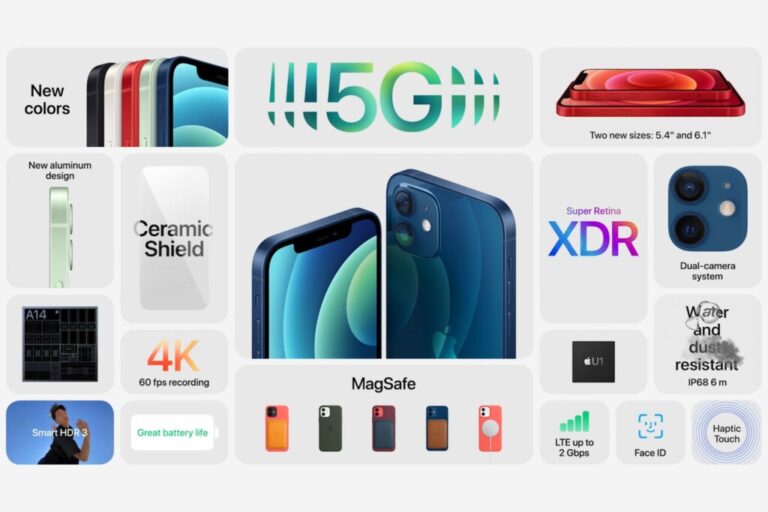
MagSafe: Wireless charging and magnetic accessories
One of the low-key coolest things about the iPhone 12 range is its MagSafe technology. Each handset is decked out with a number of magnets surrounding a wireless charging coil. Without impacting existing Qi wireless charging accessories, MagSafe allows the iPhone 12 to magnetically snap to first and third-party wireless MagSafe chargers, as well as a variety of accessories, like a MagSafe wallet, and a variety of MagSafe cases that are reminiscent of Samsung's S-View cases.
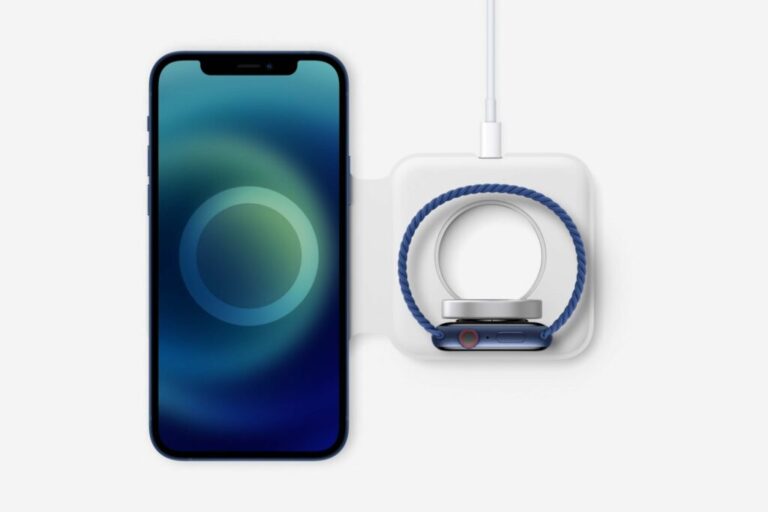
Durability: Ceramic Shield and IP68 water resistance
Lastly, one of the most impressive features of the iPhone 12 is the length's Apple's gone to to make it the most durable iPhone yet. It shares the IP68 water resistance rating of the iPhone 11 family, with one small difference. The iPhone 12 range is capable of being submerged in water as deep as 6 metres for 30 minutes at a time, as opposed to the 11's 2 metre depth limit, and the 11 Pro's 4 metre limit.
Then there's what Apple has dubbed Ceramic Shield. Developed by Corning, the leading expert in glass durability, the iPhone 12's display is hardened with ceramic, making it the "world's first transparent and color-free glass-ceramic," according to a statement Corning supplied The Verge. Apple claims the iPhone 12 display is 4-times less likely to crack from a drop when compared to any other phone on the market. We're looking forward to putting that to the test.
What does spending more get you with Pro?
Besides display size, the biggest leaps are between the 12 and 12 Pro devices.
To be frank, most of the worthwhile upgrades are available across every device. The perks you get for paying the Pro premium are great, but only if you're a keen photographer who can take advantage of the advanced features.
Firstly, there's the Pro camera chops. The iPhone 12 Pro and iPhone 12 Pro Max have an upgraded triple-lens array (upgraded from the 12's dual-lens shooter).
The iPhone 12 Pro camera has a standard 12MP wide-camera with a faster ƒ/1.6 aperture, an ultra wide lens with 120-degree field-of-view, and a telephoto lens with 52mm focal length. Those three upgrades combined should offer a huge improvement to low-light performance for photo and video, and cleaner 4x optical zoom. Improvements to the Night Mode have also made their way to the front-facing selfie camera, and the ultra-wide camera.
The iPhone 12 Pro Max takes it one step further again, offering a larger sensor on its primary shooter which Apple claims will get you an 87% improvement in low-light conditions, and an advanced telephoto lens with 65mm focal length, allowing for 5x optical zoom.
Lastly, the iPad's LiDAR scanner is making its way to the Pro range. The LiDAR scanner maps "light distance and pixel depth information" or a scene. If that sounds a bit too technical for your interests, the simple version is that it allows for more precise Augmented Reality experiences, and speeds up auto-focus in low-light scenes, allowing you to crisper quick snaps in less than ideal conditions.
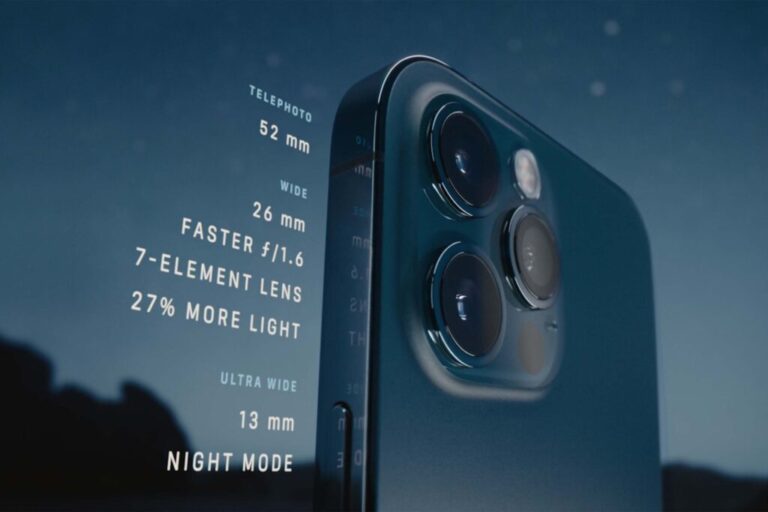
Related Articles



